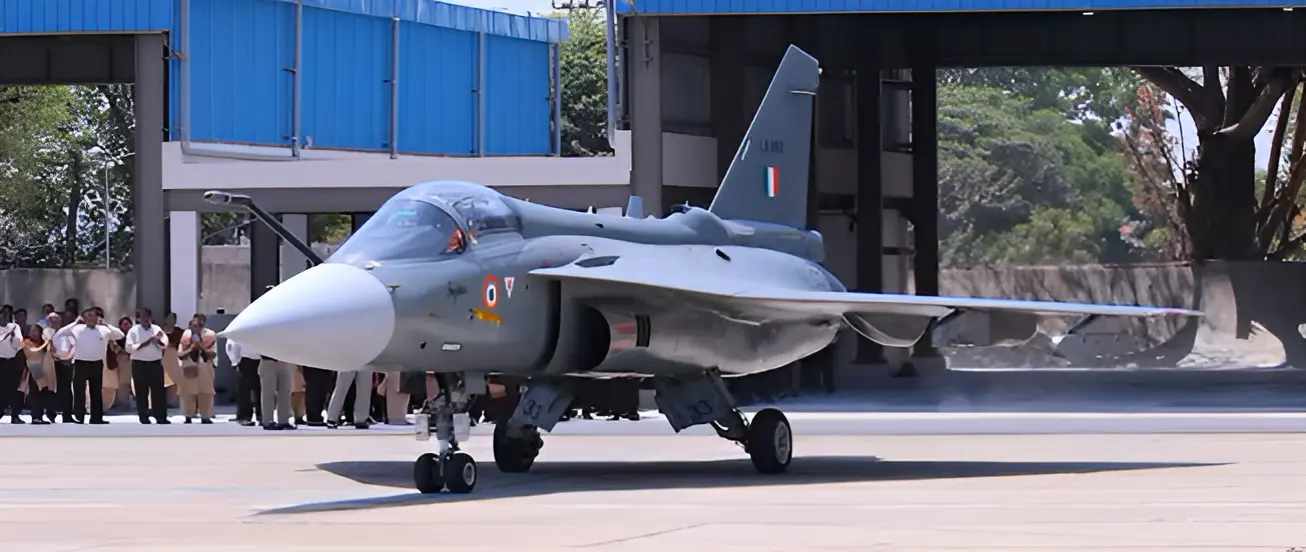
India’s Tejas Mk1A fighter jet is set for induction this fiscal year, marking a major leap in indigenous defense
Tejas Mk1A: India’s Homegrown Answer to Modern Air Combat
The Tejas Mk1A, developed by Hindustan Aeronautics Limited (HAL), represents a significant milestone in India’s journey toward self-reliance in defense. Designed as a lightweight, single-engine multirole fighter, the Mk1A is a refined version of the original Tejas, boasting advanced avionics, electronic warfare systems, and an AESA radar.
Table of Contents
With a top speed of Mach 1.8, a combat range of 1,500 km, and a payload capacity of 5,300 kg, the Mk1A is tailored for air defense, maritime strike, and reconnaissance missions. It also features indigenous integration with Indian weapons systems, including the Astra BVR missile and future compatibility with the BrahMos-NG cruise missile.
India has already ordered 83 Mk1A units under a ₹48,000 crore deal, with an additional 97 jets cleared for procurement. The first batch of six aircraft is expected to be delivered by March 2026, replacing the aging MiG-21 fleet and bolstering India’s squadron strength amid regional tensions.
Global Face-Off: Tejas Mk1A vs JF-17, Rafale, and F-16
Here’s how the Tejas Mk1A compares with its global counterparts across key parameters:
| Feature | Tejas Mk1A | JF-17 Block III | Rafale | F-16 Block 70 |
| Origin | India | China/Pakistan | France | USA |
| Generation | 4.5 | 4 | 4.5+ | 4+ |
| Engine | GE F404-IN20 (84 kN) | RD-93MA (84.4 kN) | Twin Snecma M88 (150 kN) | GE F110 (129 kN) |
| Max Speed | Mach 1.8 | Mach 1.6–1.8 | Mach 1.8 | Mach 2.0+ |
| Range (Ferry) | ~3,000 km | ~2,800 km | ~3,700 km | ~4,200 km |
| Payload | 5,300 kg | 3,700 kg | 9,500 kg | 7,700 kg |
| Radar | Uttam/EL/M-2052 AESA | KLJ-7A AESA | Thales RBE2 AESA | AN/APG-83 AESA |
| Avionics | Indigenous + Israeli | Chinese + Russian | SPECTRA EW suite | Link-16, HMD |
| Cost (per unit est.) | ~$40M | ~$30M | ~$100M+ | ~$40–50M |
| Combat Proven | Limited | Limited | Yes | Yes |
While the Rafale and F-16 offer superior payload and combat history, the Tejas Mk1A stands out for its cost-efficiency, indigenous systems, and modern sensors. Compared to the JF-17, the Tejas offers better avionics, radar, and integration with Indian weapons, making it a more capable platform in high-threat environments.
Strategic Impact: Why Tejas Mk1A Matters Now
The induction of the Tejas Mk1A comes at a critical juncture. With India’s fighter squadron strength down to 31 against a sanctioned 42, the Mk1A is expected to fill operational gaps while reducing dependence on foreign platforms. It also aligns with India’s Atmanirbhar Bharat initiative, promoting domestic defense manufacturing and export potential.
The Mk1A’s modular design allows for future upgrades, including integration with fifth-generation technologies and network-centric warfare systems. Its compatibility with Indian missiles and sensors ensures strategic autonomy, especially in scenarios where foreign platforms may face export restrictions or integration delays.
Moreover, the Tejas Mk1A is gaining traction in the export market, with countries like Argentina, Egypt, and the Philippines expressing interest. Its affordability, ease of maintenance, and adaptability make it an attractive option for nations seeking modern airpower without the geopolitical strings attached to Western or Chinese platforms.
Conclusion:
The Tejas Mk1A is more than a fighter jet, it’s a symbol of India’s technological ambition and strategic independence. While it may not yet match the combat legacy of the Rafale or F-16, it offers a compelling blend of modern capability, indigenous innovation, and future potential. As it enters service this fiscal year, the Mk1A is set to become a cornerstone of India’s air defense and a rising star in the global fighter jet arena.
Stay updated with the latest news on Rapido Updates. Keep yourself updated with The World, India News, Entertainment, Market, Automobile, Gadgets, Sports, and many more
2 thoughts on “Tejas Mk1A Takes Flight: India’s Indigenous Jet Challenges Global Giants in 2025 Skies”